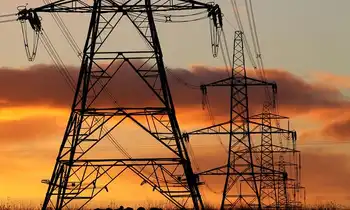Energy Market Softened, Niche Market Exists
PALO ALTO, California -- - Fewer industrial and commercial businesses express interest in adopting onsite electric generators, or distributed energy, this year, according to a study by Primen, a Boulder-based energy market intelligence company.
The study, "Releasing the Potential for Distributed Energy," reveals that the North American market for distributed generation looks substantially different than it did just one year ago. Among the 600 large businesses in the US and Canada that participated in Primen's most recent study, just two per cent are strong prospects for grid-alternative onsite generators. A study the previous year showed that 15 per cent of businesses in this group were strong candidates.
"We think the market softened for a number of reasons, including that senior management simply isn't paying as much attention to energy use now," says Nicholas Lenssen, Senior Research Director of Primen's Distributed Energy Strategic Service.
Lenssen points out that "Electricity prices stabilized -- and 2001's rolling blackouts did not continue -- or expand beyond California." This led managers to turn their attention elsewhere. "With the economic slowdown, capital spending is constrained and other issues are more top-of-mind for managers," reports Lenssen.
Lead author and analyst of the study, Shawn McNulty, PhD, a research director with Primen, reports that the survey data also show, however, that a small population of companies are still very concerned about energy and are very knowledgeable. "These are the strong prospects," states McNulty.
"We estimate that there are 1,700 large establishments in the US and Canada, representing 1.6 gigawatts of load, that are strong near-term prospects," notes McNulty. "We found that these companies are more sophisticated energy buyers in general and know more about distributed energy options than most businesses."
Industrial sites with heat-recovery potential are among the groups with the strongest interest in onsite generators to meet their baseload power needs. "And the key reason they are more likely to evaluate distributed energy options and go forward with a project is to save money," reveals McNulty. "Averting blackouts is not their main concern."
The study is the second in a series of annual, in-depth assessments of the distributed energy market conducted by Primen. Findings are based on telephone interviews with 600 industrial and commercial businesses that use between 300 kilowatts and 10 megawatts of power. The sample included digital economy (computer-based) companies such as data processing and telecommunications businesses, continuous process manufacturers, several types of commercial and industrial companies that have heat recovery potential, and sectors that produce methane gas as a by-product. Companies were stratified into four regions, based on spark spread (the difference in price between electricity and natural gas).
Energy decision makers at these companies were asked about:
-- Current use of onsite generation
-- Willingness to dispatch existing standby generators to help utilities at times of peak demand
-- Likelihood of adopting grid-alternative onsite generators in the next two years
-- Whether they would be most likely to buy or lease generators
-- Benefits of and barriers to adoption of onsite generators
-- Awareness and preferences for specific technologies
-- Payback, return on investment, and other financial requirements
-- Preferred vendors
Primen characterizes both strong and soft prospects for distributed generation and offers tactical advice on selling to these groups.
"Converting prospects into sales in the current economy is going to require that vendors and other providers of distributed generation remain tactically focused," contends Lenssen. "Our telephone survey, including in-depth interviews with 30 of these energy decision makers, revealed a lot about what it will take," he says. "Although the market is weaker now, it still exists, and results of this survey have helped us craft practical tips on bringing onsite power solutions to the customers that are ready to take the plunge."
A free summary of research highlights is available at http://my.primen.com/promotions/dems02PREpri/ .
Related News

N.L. premier says Muskrat Falls costs are too great for optimism about benefits
ST JOHNS - Newfoundland and Labrador's premier says the Muskrat Falls hydro megaproject is currently too much of a massive financial burden for him to be optimistic about its long-term potential.
"I am probably one of the most optimistic people in this room," Liberal Premier Dwight Ball told the inquiry into the project's runaway cost and scheduling issues.
"I believe the future is optimistic for Newfoundland Labrador, of course I do. But I'm not going to sit here today and say we have an optimistic future because of the Muskrat Falls project."
Ball, who was re-elected on May 16, has been critical of…




